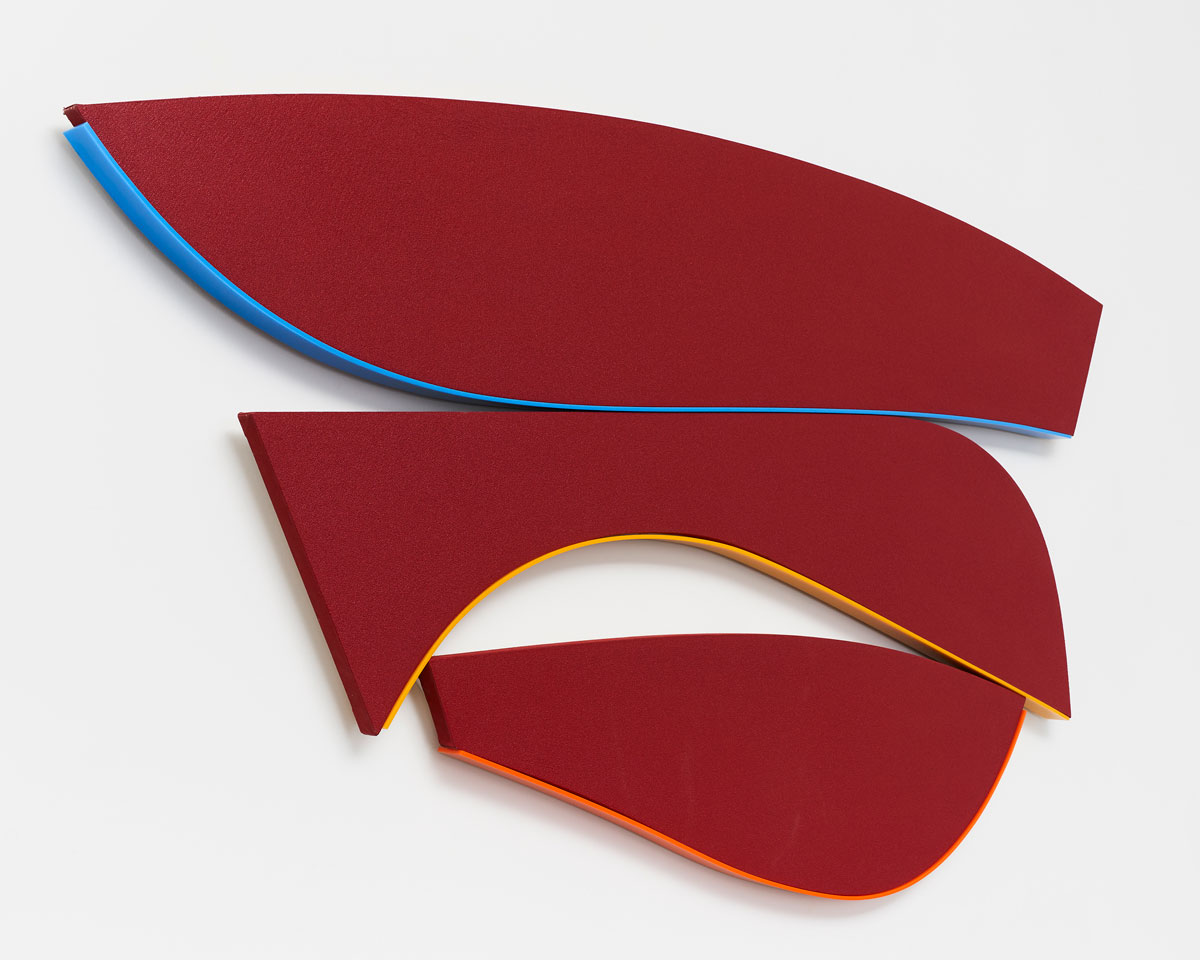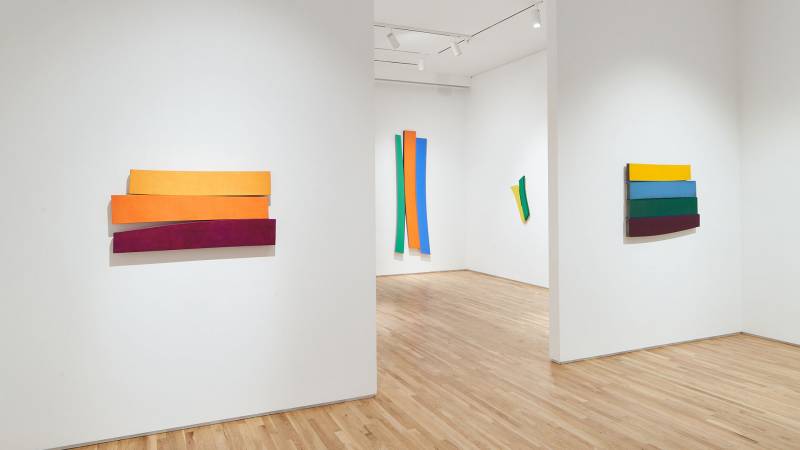Before I visited Pace Palo Alto to see Flares, the name “Kenneth Noland” mainly summoned in my mind images of target paintings: square canvases of brightly colored concentric circles that hang in art museums across the country.
I was aware of other hard-edged, geometric styles Noland embraced in his long career as, Pace describes, “one of the foremost American Color Field painters.” He made chevron paintings, stripe paintings—even oval and rectangular targets—but everything I knew of his work resided within the corners of rectilinear canvases. None of my previous experience with Noland’s oeuvre prepared me for Flares.
Beginning in 1987, Noland started working on paintings made up of two to four shaped canvases interspersed with thin strips of colored Plexiglas. (Pace cites Noland’s time spent in Santa Barbara and the influence of West Coast light and landscape on his work.) In the pieces on view, all made between 1990 and 1996, the arrangements are playful, brightly colored and sometimes roughly textured. The surfaces, their edges (different colors! precise canvas folds!) and the beguiling spaces between each canvas necessitate full 180-degree examinations.

On the gray, rainy day of my visit, the Flares brought to mind gleaming surfboards, disorderly stacks of thick-spined books and the undulating shape of a tilde. These cheerful associations are bolstered by the artwork titles: Midnight Madness, Wind Driven, Hot Times and Space Swing. Right angles are rare.
Even the Plexiglas edgings refuse to follow what at first seems like a rule to hug just one curve—in Levity, a line of Plexi starts on the upper left edge of a central blue canvas, then halfway down that length shifts smoothly to the right side of the leftmost purple canvas. Each Plexiglas strip is an independent unit, as equally considered as the glossy, matte or metallic paint Noland selected for each canvas surface.


